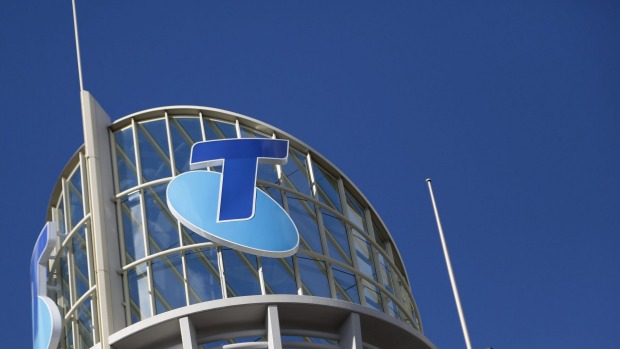
Market sources said Telstra paid between $40 million and $50 million for the UK health analytics company, Dr Foster. Photo: Jeffrey Chan
Telstra has acquired British health analytics company Dr Foster in a deal estimated to be worth between $40 million to 50 million as part of its recent push to grow profits from non-traditional businesses.
Dr Foster is a London-based company part-owned by the UK’s Department of Health. It makes software used by healthcare providers to rank and compare the performance of different hospitals and medical staff.
Neither party would state how much the deal was worth, however market sources indicated Telstra paid between $40 million- $50 million for the company. Its co-founder Roger Taylor will stay on as a consultant.
The telco giant launched its revamped electronic healthcare unit, named Telstra Health, in October 2014 having spent $100 million over the prior 12 months building up the business unit. Led by former KPMG executive Shane Solomon, its mission is to cash in on Australia’s ageing population by using technology to offer better medical care.
“This is definitely the leading health informatics company in the UK,” he said. “They started off by offering lead tables … but the real benefit now is a tool for clinicians and management to identify quickly where there might be areas of improvement.
“It pulls up ‘where’s the problem area’ for example cardiac surgery, but then it’ll allow you to drill right down to analyse whether that problem is emergency, elective or if it happens on weekends.”
The Victorian Department of Health is currently the main Australian user of the service but Telstra is set to ramp up its sales in Australia once it tailors the product to local needs.
Telstra is keen to introduce is the ability to judge the productivity of various divisions within a hospital into Dr Foster’s global services. Mr Solomon said this would give hospitals a chance to track how efficient different departments were.
“In healthcare the biggest cost is staff,” he said. “A productivity measure we might be able to put into Dr Foster software would be the risk adjusted patients treated per hour … or risk adjusted operations per theatre session.”
Mr Solomon said that while the system had the ability to track down specific doctors and nurses who were lagging behind their peers, there was no plan to introduce this service – in part because special circumstances could unfairly tarnish a worker’s statistics and reputation.
“If [customers] decide they want the field that says ‘treatment doctor’ to be included in that then it definitely allows you to drill down into individual surgeons and units,” he said. “So far there’s a reluctance to do that because of [the Australian Medical Association] but also because it’s easy to say ‘this person looks like an outlier’ but when you drill down there could be a perfectly good reason why someone died.
“So we’re all very sensitive about pre-judging someone.”
Telstra and other telcos are desperately seeking out new sources of profits as their traditional phone and internet business comes under increasing threat from the Federal Government’s construction of the national broadband network and internet players like WhatsApp and Skype offering messaging and phone services at much lower costs.
In 2014, Telstra retail group executive Gordon Ballantyne said he expected Telstra Health to be a substantial part of its business within 5 years. This is despite the unit generating just $31.5 million in the six months ending December 2014.
